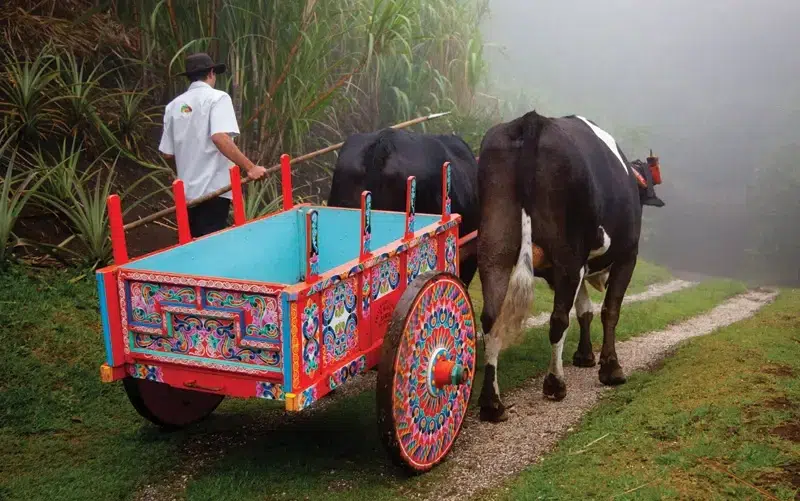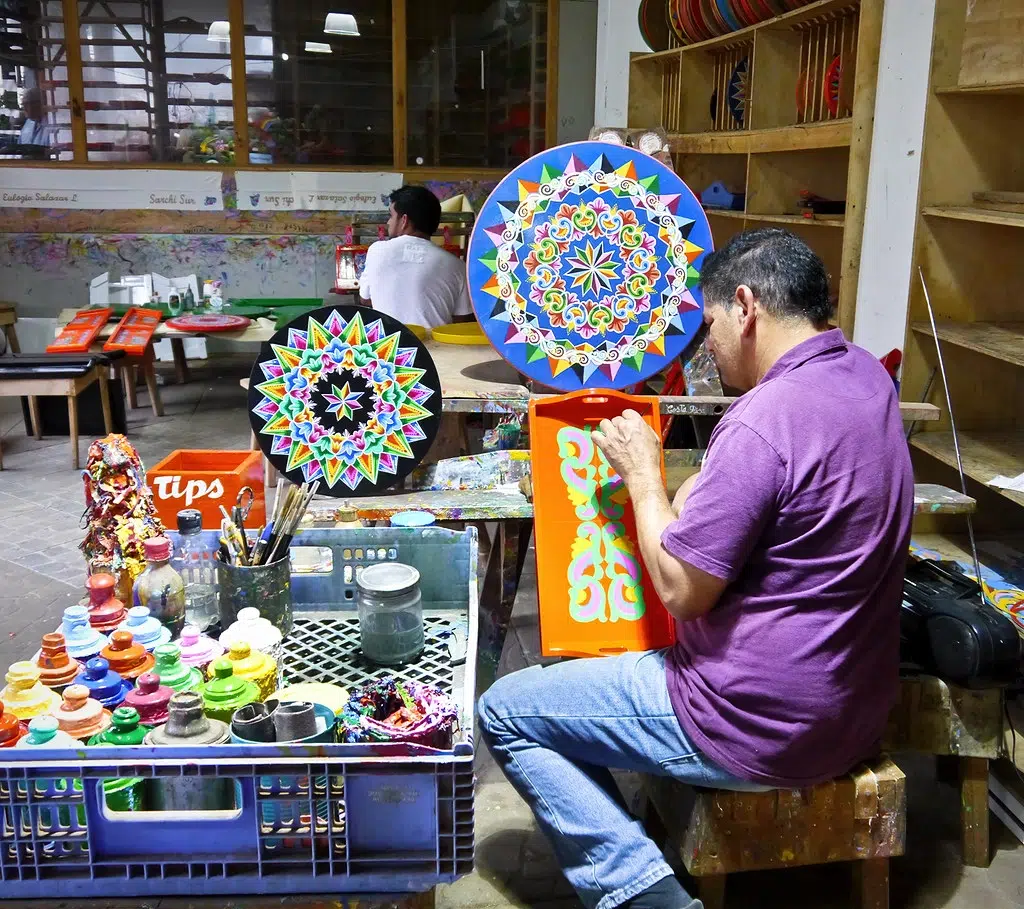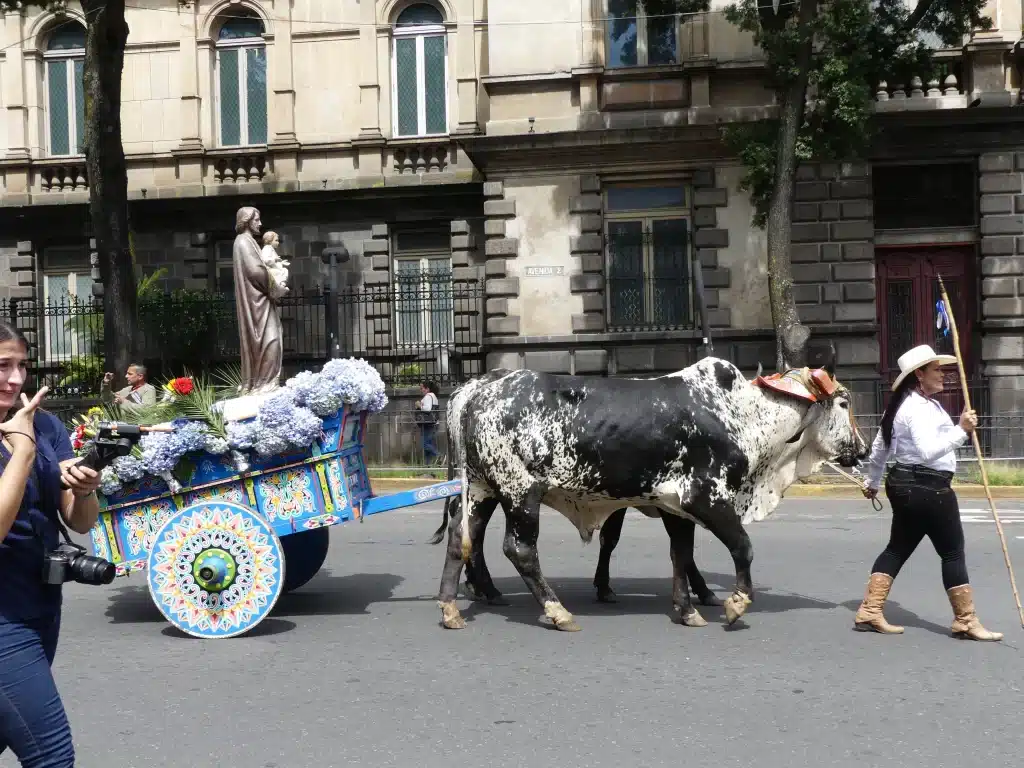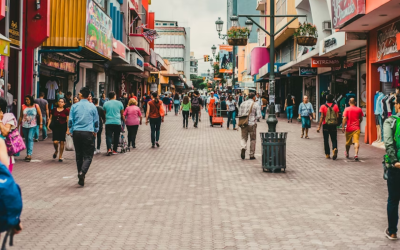Before cars and other forms of transportation even existed in Costa Rica, people used a car made of wooden wheels to move around from one part of the country to another. These were the Oxcarts.
Its origins can be traced back to the mid-nineteenth century, when they made their way from Costa Rica’s Central Valley, traversing mountainous paths to reach Puntarenas on the Pacific Coast.
The traditional Costa Rican oxcart, or “carreta” in local parlance, is one of the country’s most illustrious crafts and has received recognition from UNESCO.
Nowadays, they have become a colorful remembrance of the legacy of past generations and a beloved craft among locals and tourists alike.

The Story Behind Costa Rica’s National Oxcarts
According to the Oxherd House Museum, in the beginning, oxcarts were made from wood and had no decorations. But then people started painting them with many colors and artistic designs.
The first oxcarts in Costa Rica were simple and plain, made only from wood. They had spoked wheels that got stuck in the rough, muddy land. But during the mid-19th century, a new wheel design came into play.
Based on an ancient Aztec style, this new design used solid wood wheels with a metal band. These wheels could handle the mud without getting stuck.
To keep the wheels safe, people apply a kind of paint called minium powder or lead oxide. This paint mixed with oil could make the wheels orange and red, and it also protected them from damage. This discovery was a big deal for decorating oxcarts later on.
The painted Oxcarts Of Sarchi
The painting and decoration of oxcarts began at the Joaquin Chaverri Oxcart Factory in Sarchi in 1902, a town known for its artisans. For over 100 years, farms near Sarchi have produced some of the country’s best coffee beans. Therefore, the need for a sturdy way to transport coffee beans to coastal ports led to the demand for oxen-pulled carts.
According to the story passed down in the family of Joaquin Chaverri, Joaquin decorated his cart so that he could take his family on Sunday outings. According to his family, he painted his first oxcart orange because it was the only color he had available. As a result, orange and red have become the most traditional colors for painting carts.
Chaverri’s family members say that Joaquin wanted the designs to stand out from other kinds of art at the time. Having no ready-made brushes, he made his own from dogs’ hair. His decorations were based on Costa Rican plants and flowers, and his wheels were decorated with spear-tip shapes.
Over time, Oxcarts were painted with local designs meant to help others identify the origin of each cart. As the movement grew, ox herders began including more designs, like flowers or portraits of people, and sometimes even beautiful landscapes. Soon, the designs on oxcarts became an area of pride for ox-herders and their local regions.
What was originally transported by the painted oxcarts of Costa Rica?
Traditionally, the oxcart was used in Costa Rica as a form of transportation and a means to carry goods from one place to another. For many families, the oxcart was the sole means of transportation and a vital part of their survival.
Some of the main goods that Costa Rica exported were coffee, sugarcane, and corn. The oxcarts loaded up the cargo at the plantations and traveled on small, rough roads to the main ports. This trip could sometimes take up to 15 days.
Are Oxcarts Still Used in Costa Rica?
Believe it or not, some people in Costa Rica still use oxcarts for transportation. However, these oxcarts are no longer primarily used for traveling between different areas. Instead, they are often employed to move products during harvest season or in areas where the terrain is too rugged for modern vehicles.
Nevertheless, Oxcarts in Costa Rica remain powerful symbols of the country’s rural heritage and vibrant Costa Rican culture. As a result, you can spot them in parades, festivals, and various celebrations.

Where To See Painted Ox Carts In Costa Rica
If you’re eager to witness this historical emblem up close, visiting the epicenter of oxcart craftsmanship, Sarchí, is a must. Here, you’ll encounter the world’s largest ox cart.
In Sarchí, two factories stand ready to welcome you into the world of traditional oxcart crafting and painting. The Joaquin Chaverri Ox Cart Factory and the Eloy Alfaro Ox Cart Factory host daily demonstrations, allowing you an intimate glimpse into the intricate process.
Observe the artistry behind painting oxcarts and embark on a journey to uncover their skills.

Plan Your Visit and See the Colorful Oxcarts in Costa Rica
Visiting Costa Rica today and seeing the colorful oxcarts is a reminder of its rich history. Nowadays, they’re more than just vehicles; they stand for the country’s spirit and determination to keep going. To learn more about these inspiring ox cart designs, don’t hesitate to contact Find My Costa Rica.
Our local guides are more than ready to assist you in every way. We’ll ensure you get to all the exciting destinations on your trip to Costa Rica. We invite you to keep reading our blog so you can continue exploring more of our country.



